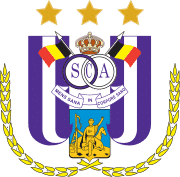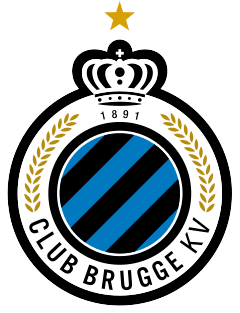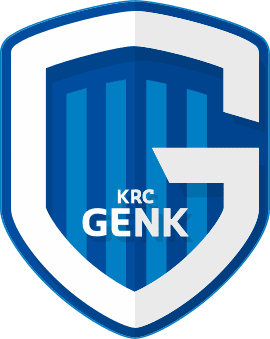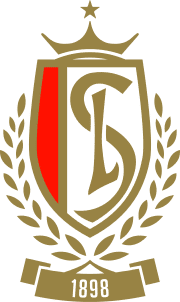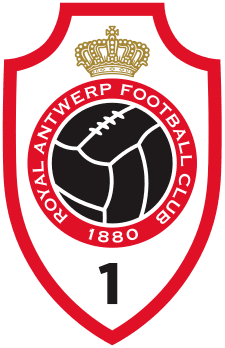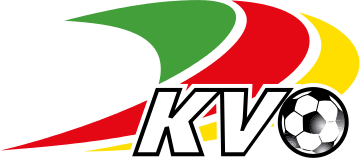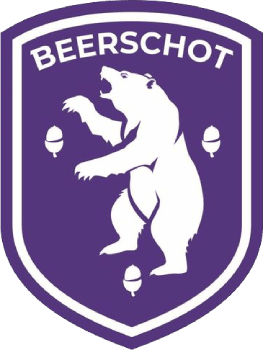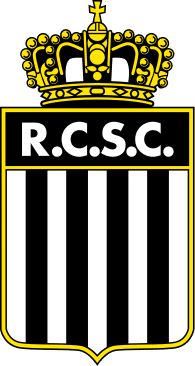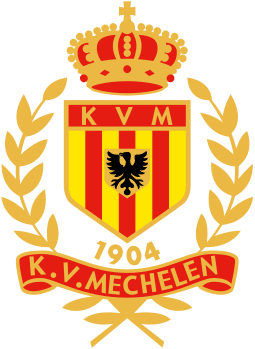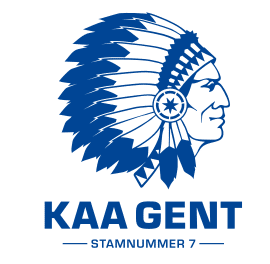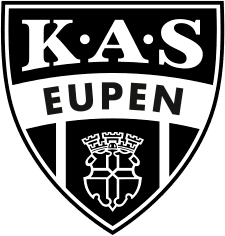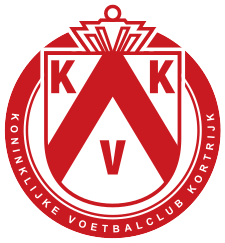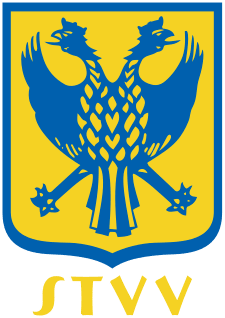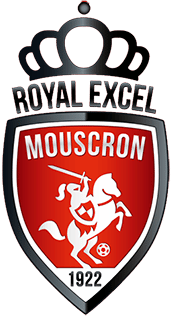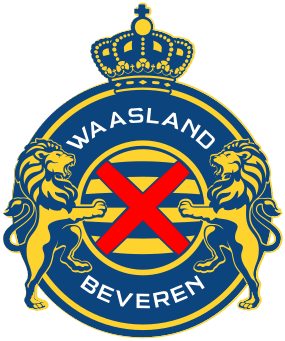R.S.C. Anderlecht Tryouts & Club Guide: History, Stadium, Players, and More!

Welcome!
Discover the world of soccer with fcscout.com, your go-to scout for club tryout information, club guides, player profiles, in-depth product reviews, and more. We’re dedicated to exploring and revealing the best in each domain, empowering you with knowledge to make informed choices.
Thank you for being here!
Hi, I’m Carlos! A coach, sports enthusiast, and the founder of FCScout.com.
I fell in love with the game at a very young age like many of you. I’ve been following and playing soccer for many years.
Throughout my career, I always enjoyed helping soccer players chase their dreams, which is why I started this website. I wanted to reach a larger audience outside of my local area and fcscout.com was born.
This website is a platform I will be using to update club pages on any tryouts, stadiums, players, tech, and more from clubs around the world. I also create free recruitment profiles for players looking to have that extra competitive edge when reaching out to clubs.
That’s it. That’s my pitch for you to stick around (or browse the site as you please).
This is already too much text for a “see more” drop-down button thing. If you want to reach out to me, head on over to my contact page 🙂

Royal Sporting Club Anderlecht, usually known as Anderlecht or RSCA, is a Belgian professional football club based in Anderlecht, Brussels Capital-Region. Anderlecht competes in the Belgian First Division A, the top flight of Belgium football.
Anderlecht Youth Development Academy
RSCA BELFIUS ACADEMY (U14)
The RSCA Belfius academy is the administrative and sports center. The training center in Neerpede is the permanent training center for the youth teams from the U14 up to and including the U23. In addition to the training grounds, the modern training center has a fitness room, relaxation rooms, a rehabilitation pool and a physiotherapist and doctor’s practice.
RSCA FOOT ACADEMY (U8-U13)
The league and friendly matches of ALL national youth teams take place at the RSCA Foot Academy. An outdoor and indoor artificial grass pitch and a grass pitch are available on this site. Furthermore, this accommodation is used for the training of all elite teams U8 to U13.
R.S.C. Anderlecht Trails/Tryouts
Due to the massive demand and the limited number of places available, it is NOT possible to join the RSCA youth academy spontaneously. The RSCA youth academy has a professional scouting apparatus that identifies and possibly recruits talent in an objective manner.
However, RSCA works together with 2 football schools that offer the same training philosophy to non-RSCA players:
Additionally, there are occasional moments where RSCA announces open tryouts on their website, which can be found by clicking here.
TFC2020
TFC2020 is a football school that officially cooperates with RSC Anderlecht and provides weekly specialization training with the aim of improving the movement and football skills of each individual with innovative exercise material . These sessions are additional training to the sessions in your club, led by passionate and highly trained youth coaches.

Although TFC2020 officially cooperates with RSC Anderlecht (practice material and coaching) and the training continues at the RSCA youth academy, it is by no means a gateway to the training.The RSCA youth recruitment and technical managers are the only authorized persons for this.
The training program offered takes into account the trends within modern football and is specifically aimed at the target group U9 to U12 (2012 – 2011 – 2010 – 2009) .
- Perfecting basic techniques (targeted controls, dribbles, bilateral passing and staircases, creativity, …)
- Neat coordination (maneuverability, speed, …)
- The cognitive aspect (attention, concentration, game intelligence, …)
For more information, please visit: www.tfc2020.com
Multi Foot Evolution (MFE)
Multi Foot Evolution is a football school that officially cooperates with RSC Anderlecht. MFE is responsible for the RSCA footFUNskilzz project within the RSCA training. RSCA footFUNskillzz is a new project set up to replace the U6 & U7 elite training that RSCA offered so far. The aim is to train players aged 5 & 6 more broadly (focus on exercise instead of purely on football). The players will be offered two training sessions per week. One Multi training and one soccer training. The target group we are targeting for this project is 2014 – 2015.
We will also offer specialization training courses via the MFE football school every Saturday afternoon, which will also involve coaches, training materials and fields from RSCA. The target group MFE will focus on during these sessions will be the U8 ( 2013 ) & U9 ( 2012 ) players. Both boys and girls will be able to register for 1 test training.
Important: Participation in events organized by MFE is in no way a guarantee of entry to RSCA elite teams. Players can only join RSCA or RSCA footFUNskillzz if they are found to be sufficiently talented by the RSCA youth scouting and / or management training.
More information can be found on our site: www.mutifootevolution.be
Anderlecht Recruitment Trials
At the time of this writing, there is no official publishing’s on Anderlecht trials. Please come back at a later date while we monitor this club or click here to visit their official news section.
EXPLORE MORE CLUBS!
Explore more professional clubs by continent.
Anderlecht History
The club was originally known as the Sporting Club Anderlechtois and was established on May 27, 1908, in the Concordia café (which was located on the Rue d’Aumale/Aumalestraat in the municipality of Anderlecht). In their debut match, the club defeated Institut Saint-Georges by a score of 11–8. They entered the official competition for the first time in the 1909–10 season, beginning play at the lowest level possible within the Belgian football league structure before moving up to the third provincial division. They were given the name Promotion after being promoted to the second-highest level of football during the 1912–1913 season. Due to the outbreak of World War I, the championships were put on hold after having been played for only one season at that level. They were picked back up in the 1919–20 season. Anderlecht relocated to its current stadium in the Astrid Park in 1917 in response to the growing popularity of the club’s football squad (then known as Meir Park).
They named the stadium the Stade Emile Versé in honor of the club’s first significant benefactor, the businessman Emile Versé, and gave the stadium its current name. After the conclusion of the 1920–1921 campaign, Anderlecht earned promotion to the first division for the very first time in the club’s illustrious history. Anderlecht earned the derision of local rival clubs Union Saint-Gilloise and Daring Club de Bruxelles, who referred to them as the “lift club” due to the fact that they were relegated four times (1923, 1926, 1928, and 1931) and promoted four times (1924, 1927, 1929, and 1935) over the course of the next 14 seasons. The years 1923, 1926, 1928, and 1931. The club went through a name change in 1933, 25 years after it was first established, and became known as the Royal Sporting Club Anderlechtois. Anderlecht have remained at the highest level of football competition ever since they were promoted in 1935. Anderlecht took home their first league championship in 1947 with the help of Jef Mermans, a striker who had been acquired from K Tubantia FC in 1942 for a record-setting fee of 125,000 Belgian francs.
Their success continued to rise in the years that followed, as evidenced by the fact that they won a total of eight championships between 1949–1950 and 1955–1956, including three crowns in a row on two separate occasions, as well as two more championships in 1958–1959 and 1961–1962. In the 1960s, the club even won five consecutive league championships (beginning in 1963–64 and continuing through 1967–68), which is still a record for the Belgian league. This accomplishment occurred under the coaching of Pierre Sinibaldi and then Andreas Beres. Paul Van Himst, who led the league in scoring in 1965, 1967, and 1969 and won the Belgian Golden Shoe in 1960, 1961, 1965, and 1974, was the standout player on this squad.

Anderlecht competed in the inaugural season of the European Champion Clubs’ Cup in 1955–1956 but was eliminated by Voros Lobogo in both legs of their matchup. It wasn’t until the 1962–1963 season that they finally won their first European match, and it was against Real Madrid. It was a 1–0 triumph, and it came after they had drawn 3–3 in Spain. They were victorious over CSKA Sofia in the second round, but their run was cut short by Dundee in the quarterfinals of the competition. This was their first time advancing to the second round. Anderlecht was defeated by Arsenal in the championship game of the Inter-Cities Fairs Cup in the 1969–1970 season.
Anderlecht only won one championship during the period 1975–1984 but had significant success in Europe. They defeated West Ham United and Austria Wien to claim the European Cup Winners’ Cup in 1975–1976 and 1977–1978, respectively, and went on to win the two succeeding European Super Cups.

The season 1982–1983 was an important one for the club for a number of different reasons. Former Anderlecht fan favorite Paul Van Himst was hired as the new coach, the team won the UEFA Cup for the 1982–1983 season, and construction on the new club stadium began during this season. But within Belgium, Anderlecht were only able to finish in second place in their league, behind Standard. Their attempt to defend their title in the UEFA Cup against the English team Tottenham Hotspur in 1983–1984 was unsuccessful at the final hurdle. Anderlecht advanced to the final in a contentious manner by defeating another English team, Nottingham Forest, by virtue of a questionable penalty kick in extra time that helped them win 3–2 on aggregate. After further investigation, it was discovered that Anderlecht had paid the equivalent of 27,000 British pounds to a referee in order to guarantee their team’s place in the final. The Purple and Whites cruised to an easy 18th championship in 1984–85, finishing 11 points clear of Club Brugge to end a string of three consecutive second-place finishes.
Anderlecht defeated Club Brugge in a two-legged play-off to win the championship once again in the 1985–1986 season, but this time it was a more difficult process. On the final matchday of the 1986–1987 season, Anderlecht won their 20th championship, bringing their total number of titles won to 42. After that, they were without crucial players such as Franky Vercauteren, Juan Lozano, and Enzo Scifo (who had transferred in the summer of 1987). (heavily injured in a game at KSV Waregem a few months earlier). Despite having a depleted squad that was coached by Raymond Goethals and finishing in fourth place in 1988 behind Club Brugge, KV Mechelen, and Royal Antwerp, they were able to win the Belgian Cup for the sixth time in the club’s history with a 2–0 victory over Standard Liège. Luc Nilis and Eddie Krnevic scored the goals that won the match for them. Anderlecht were able to keep the trophy the next season thanks to goals scored by Eddie Krncevic and Milan Jankovi (again with a 2–0 victory against Standard), but they were unable to improve their standing in the championship. After winning his second cup, Goethals moved on to play for Bordeaux in the Ligue 1 of France.

Anderlecht competed in one more European final during the decade of the 1990s, which was the 1990 European Cup Winners’ Cup Final. They were defeated by the Italian club Sampdoria in this match. The club’s performance in European tournaments subsequently deteriorated, with the club’s greatest results coming in the UEFA Cup in 1990–1991 and 1996–1997. They competed at the national level and came away with four championship trophies and a cup. Anderlecht won an additional cup and five more championships in Belgium during the 2000s, bringing their total to 29 titles by the end of the decade. In the 2000–2001 season of the UEFA Champions League, they made it all the way to the second round for the first time ever. After that, they played in another group stage, where they finished third in their group behind Real Madrid and Leeds United.

Anderlecht made history in the 2011–12 UEFA Europa League by becoming the first Belgian team to finish the group stage of a European competition with the maximum number of points. They did this by dominating their group opposition, which included Lokomotiv Moscow, Sturm Graz, and AEK Athens. The Purple and Whites won their 30th Belgian league title in 2009–10, while Anderlecht made history in the 2011–12 UEFA Europa League. In addition to this, no other team in the Europa League competition that season was able to accomplish this feat. Anderlecht won their 31st Belgian title on May 6, 2012, and on July 22, 2012, they won their tenth Belgian Super Cup. Both victories took place in Belgium.
Colors and Crest
Anderlecht’s primary colors are purple and white, and the club’s home jersey is typically purple with white trim. However, the team played in a black and purple home jersey for the 2005–2006 season, and they wore a gray home jersey during the 2007–2008 season. In the beginning, the predominant color of the shirts was a deep purple. On the Anderlecht club badge is inscribed “Mens sana in corpore sano,” which translates to “healthy mind in a healthy body,” and the three letters “SCA,” which stand for the initials of the club’s name (Sporting Club Anderlechtois). In 1933, after the club’s name was changed to the Royal Sporting Club Anderlechtois, a crown was added to the crest. The colors of Anderlecht served as an inspiration for the colors that Al Ain FC uses in the United Arab Emirates.
Anderlecht Stadium
Anderlecht’s home games are played at the Lotto Park stadium, which is situated within the Astrid Park in the city of Anderlecht. It is currently capable of accommodating 22,500 people at once. The construction work began in 2011 and continued for a total of two years. Since the Emile Versé Stadium was constructed in 1917, Anderlecht football matches have been played in the adjacent Astrid Park. In 1983, the stadium underwent a comprehensive renovation, and the following year, it was rechristened in honor of Constant Vanden Stock, who served as chairman at the time. Before 1917, the club had played on a field in the area that is now known as Rue du Serment/Eedstraat for a few of years beginning in 1908. After that, they played on a stadium that was located in what was then known as Rue Verheydenstraat and is now known as Rue Démosthènestraat. In 2013, the stadium underwent renovations that included the installation of new scoreboards and advertising strips along the perimeter of the playing field. These changes were made in order to comply with rules set forth by UEFA for the Champions League. The ultra-modern LED strips and their controls will be provided by ColosseoEAS, who was selected as the supplier. The new owner, Marck Coucke, announced in July 2019 that he had sold the name of the stadium to the company Lotto, and the venue is now known as Lotto Park Stadium.

Anderlecht had planned to relocate to the Eurostadium, which has a capacity of 60,000 and is scheduled to be finished in 2019. Additionally, the Belgium national team will call the Eurostadium their home field, and it will serve as a venue for matches during the UEFA Euro 2020 tournament. However, in the years that followed, the project was beset by frequent delays caused by political infighting. These delays caused the project to go behind schedule. Anderlecht ultimately decided not to participate in the project in February of 2017.
City of Anderlecht, Belgium
One of the 19 municipalities that make up the Brussels-Capital Region in Belgium, Anderlecht can be found there. It is located in the south-western part of the region and shares its borders with the City of Brussels, Forest, Molenbeek-Saint-Jean, and Saint-Gilles, as well as the Flemish municipalities of Dilbeek and Sint-Pieters-Leeuw. Saint-Gilles is the only municipality in the region that is not located in Belgium. It is legally required to be bilingual (French and Dutch), as is the case with all of Brussels’ municipalities.

Within the city of Anderlecht are a number of neighborhoods that stand out both for their history and architecture. The municipality had a population of approximately 118,414 people as of the first of February in 2015. The total land area is 17.74 square kilometers (6.85 square miles), which results in a population density of 6,610 inhabitants per square kilometer (17,100 inhabitants per square mile). The upper part of it is more verdant and has a lower population density.
Geography
Brussels is located in the middle of Belgium’s north-central region, around 110 kilometers (68 miles) from the coast of Belgium and approximately 180 kilometers (110 miles) from the most southern point of Belgium. It is situated in the central part of the Brabantian Plateau, approximately 50 kilometers (31 miles) to the north of Charleroi and 45 kilometers (28 miles) south of Antwerp (Flanders) (Wallonia). Its lowest point can be found in the valley of the almost completely covered Senne, which cuts the region from east to west, and its highest points can be found in the Sonian Forest, which is located on the region’s southeastern side. The region’s average elevation is 57 meters (187 feet) above sea level. In addition to the Senne, major elevation changes can be attributed to tributary streams located to the east of the region. Some examples of these streams include the Maalbeek and the Woluwe. The central boulevards of Brussels are elevated by 15 meters (49 feet) above mean sea level. Near the Place de l’Altitude Cent/Hoogte Honderdplein in Forest is where you’ll find the highest point, which has an elevation of approximately 108 meters (354 feet).

Climate | Weather
The climate of Brussels is classified as oceanic (Koppen: Cfb), which means that it has warm summers and cold winters. The proximity of land to the coast affects the climate of the surrounding region by drawing marine air masses in from the surrounding ocean. The presence of nearby marsh areas also ensures a maritime environment with moderate temperatures. The Brussels-Metropolis Region has one of the greatest annual precipitation totals of any European capital, with an average of roughly 200 days of rain each year, according to observations taken over the course of the last one hundred years. Snowfall is uncommon, with only about 24 days on average each year. In addition, during the summer months, the city is frequently hit by strong thunderstorms.
Anderlecht Lifestyle







